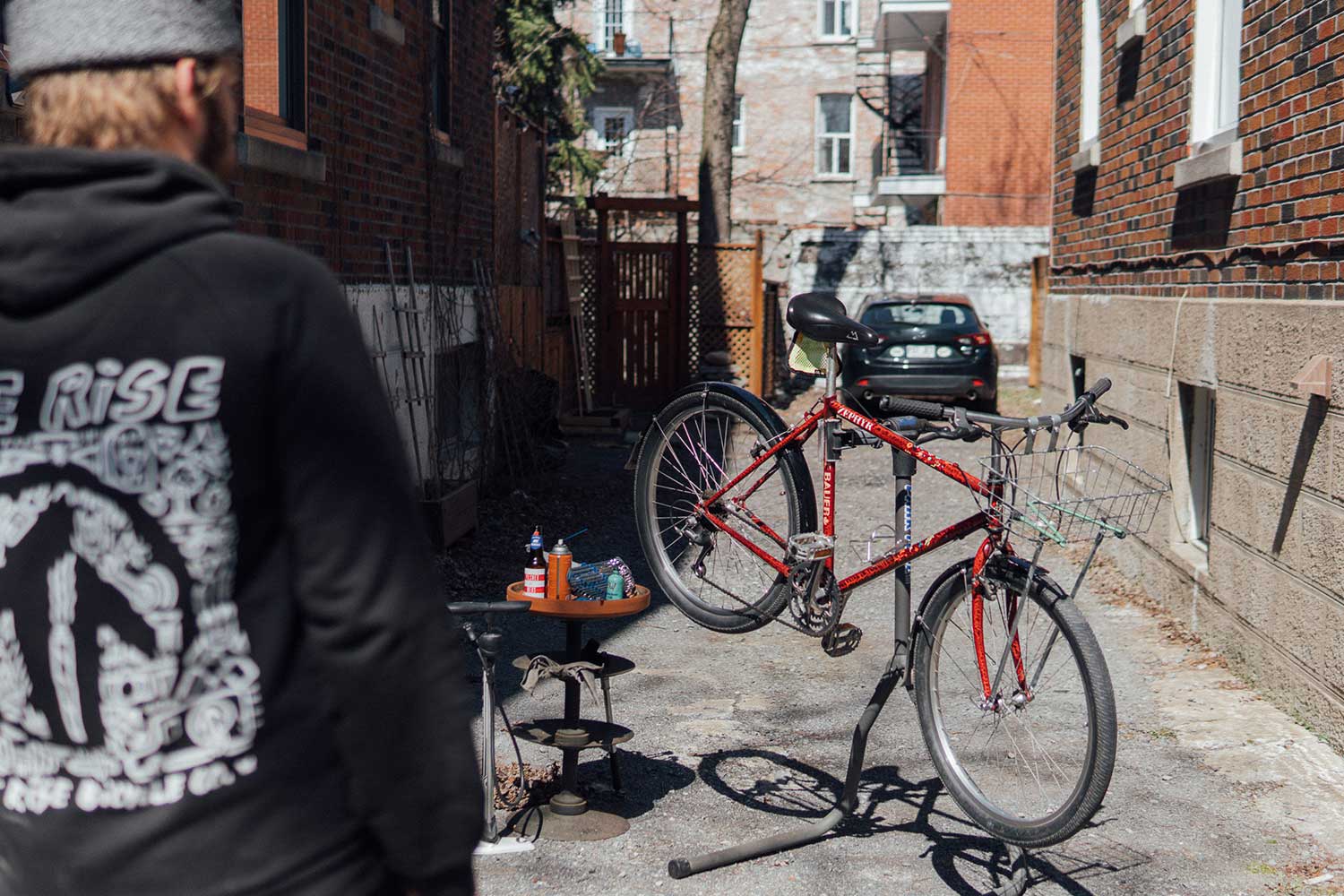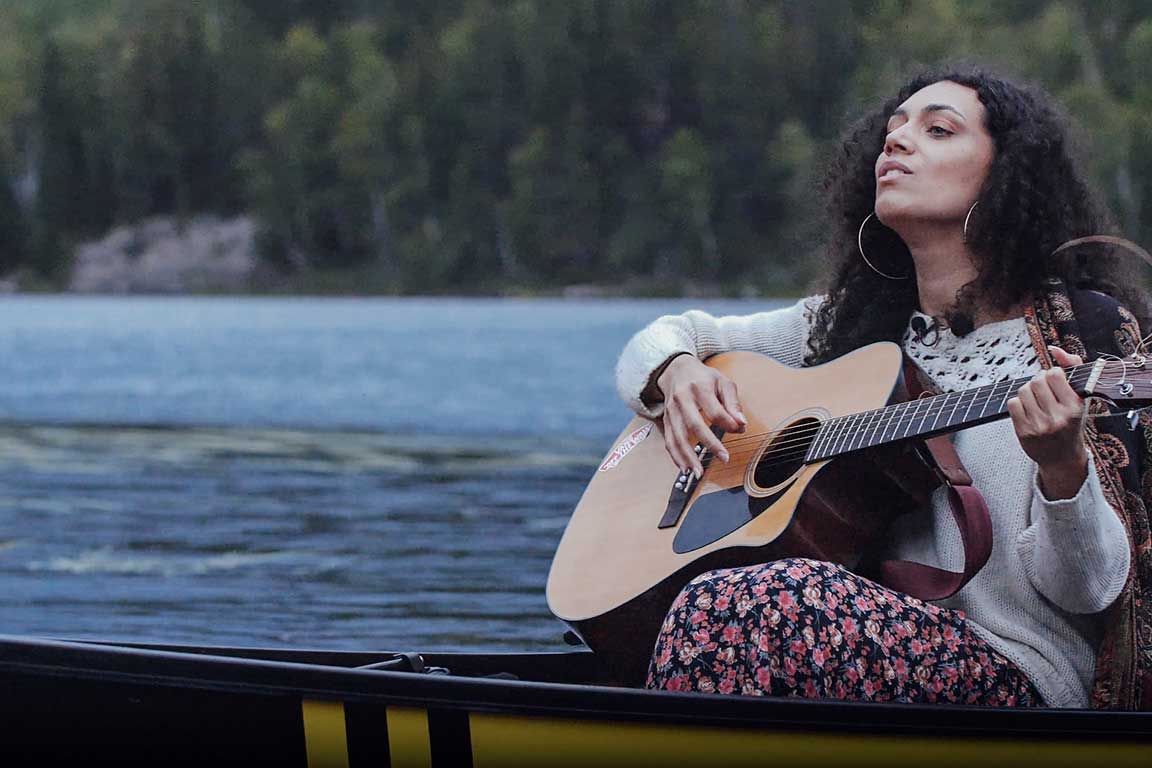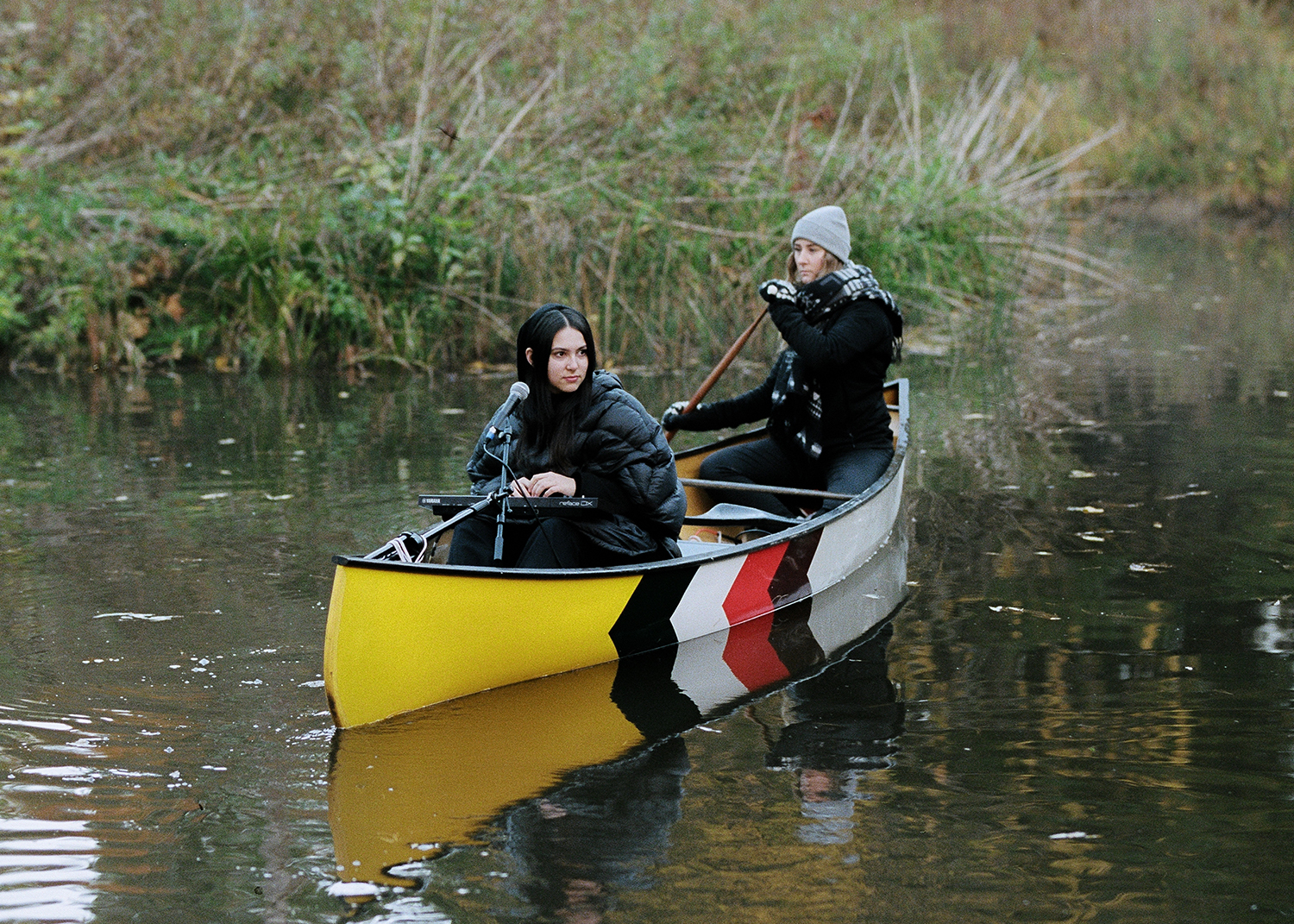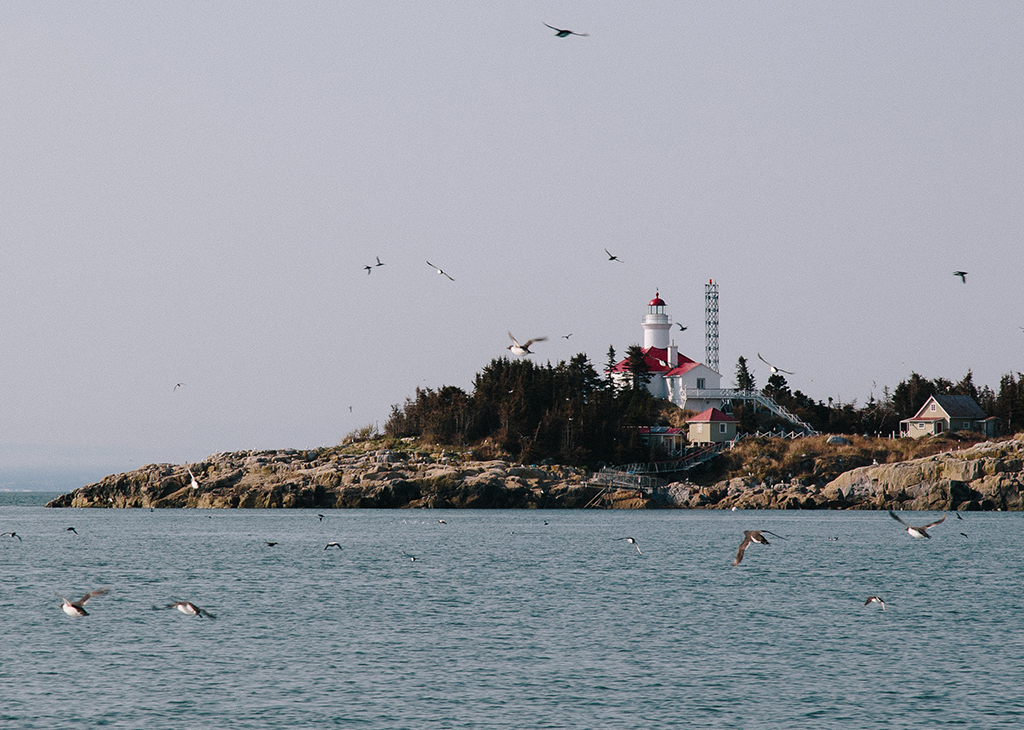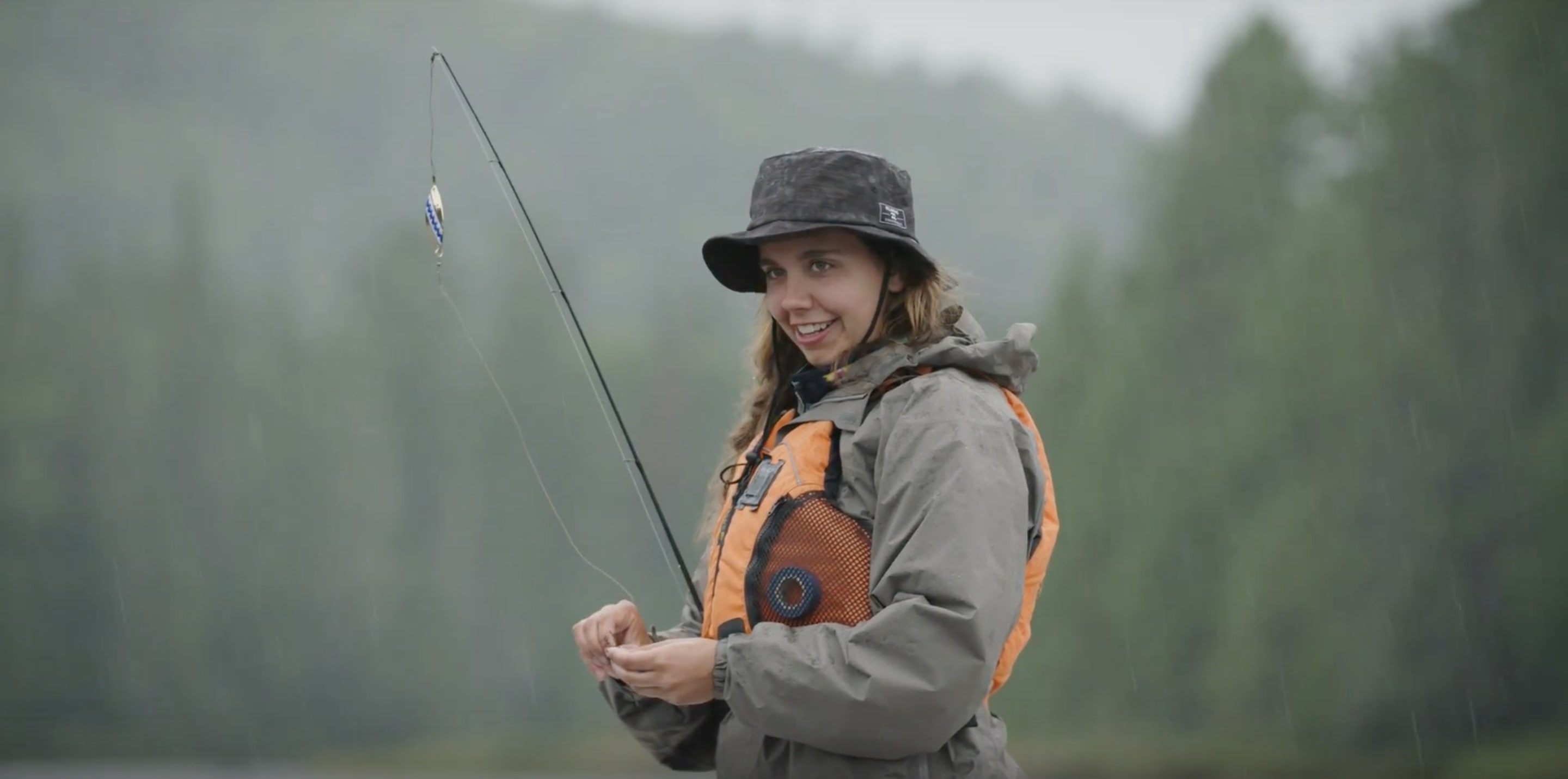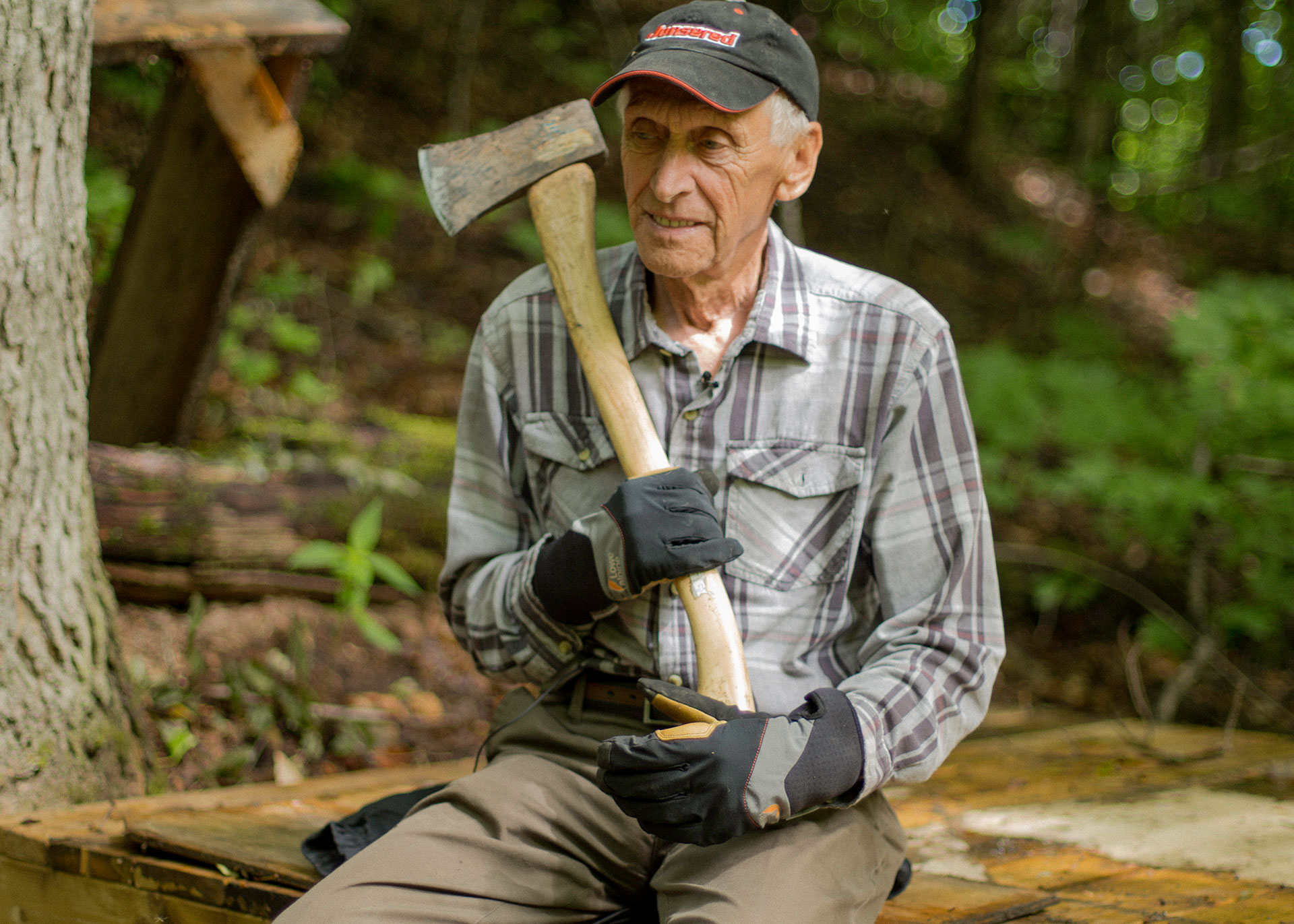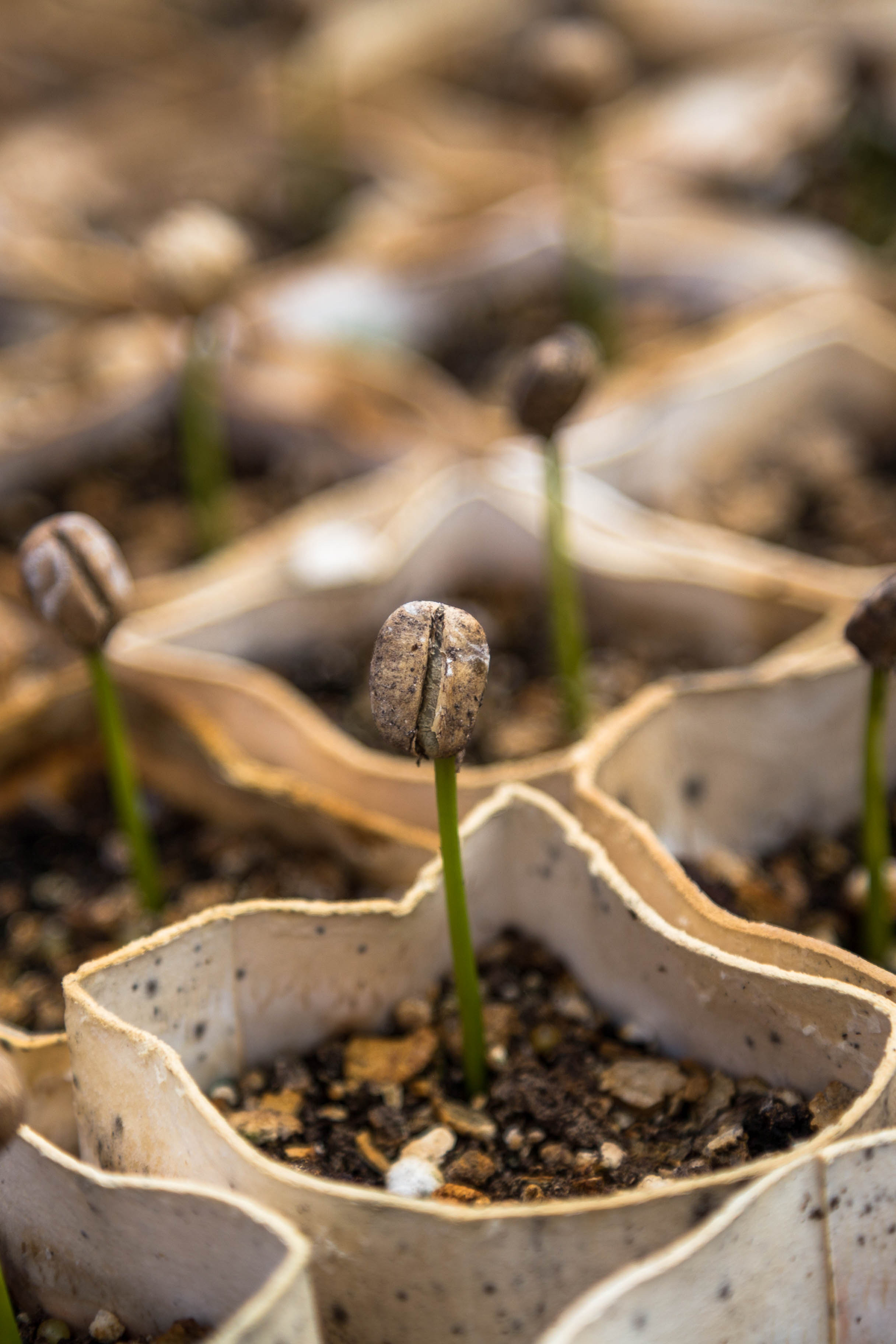New Narratives
Blood Lines
Between photographer Alexi Hobbs and his grandfather, a bond forged out of stories, feathers, and wood.
In 1942, my grandfather, Antonio “Pit” Allard, deserted the Canadian army. He was 22 years old.
Rather than fight in a war that made no sense to him, he sought refuge in the Matapedia Valley forests of the Gaspé Peninsula. For four years he made do, for better or worse, with whatever nature had to offer, all the while waiting for the right moment to come out of hiding and rush back to his sweetheart, Jeanne, my grandmother.
Those years were long, lonely, and restless. As a clandestine farm worker in the summer and lumberjack in the winter, my grandfather survived mainly off a diet of baked beans. To break this culinary monotony, he set snares to catch hares and hunted partridges. What was once a hobby turned into a real means of procuring sustenance and made his life a bit more interesting. Little by little, hunting became intrinsic to who he was and, by extension, to my family’s DNA.

Unlike Pit, I never experienced the draft. I never came close to fighting a war nor found myself fac-ing death; I was born in Montréal, far from the Gaspesian forests and mandatory military service. In his time, my grandfather managed a brief stint behind bars, cleared his name, married the one who had patiently waited for him on the outside, and settled in the city. Pit became a blacksmith and I, a photographer. But, just like him, I always felt I wasn’t entirely cut out for urban life. I too need to hear birds chirping and see the stars to really feel like myself.
Whereas I tend to take a step back when I observe the world, Pit had a reputation as a seasoned story-teller. Like his children, my mother included, I grew up with his stories, for the most part in-spired by fishing or hunting trips, and often fanciful mixtures of fact and fiction. These tales fed my imagination and added an extra touch of magic to my favourite spectacle, the one that’s always going on outside. It’s impossible for me to know whether this closeness I feel with nature is innate or acquired, but I know it’s forever connected to my grandfather. He’s the one who showed me how to fish, set snares, and chop wood. I was a quick study, and these things came to me quite naturally—“not like those other city boys, who can’t even bait a fishing hook,” he would say. It was in Casey, a hunting camp deep in the forests of northern Québec, that these scenes came to life, with all their sounds and smells permanently etching themselves in my memory.

I can still picture my cousin Vincent and I, 10 years old, following Pit along the little paths around the log cabin, proudly sporting our neon orange jackets. I can still feel how excited we both were when we spotted partridges in the hopes that he’d let us finally shoot one ourselves, as he always promised. But, time and time again, he’d forget, overcome by his own feverish excitement, or maybe because he doubted our hunting skills. Looking back, I think he would rather have us pluck the partridges than shoot them. I still remember my fingers being sticky with feathers and blood. But I never complained. This world held a certain fascination for me, and these moments I shared with my grandfather, even if they were few and far between, were transformational for the child that I was. I wanted to feel strong and skilled, worthy of belonging to his clan.
Twenty or so years later, in the winter of 2009, I decided to follow him on a new adventure, one he vowed would be his last. At 90 years old, he felt it was time for him to say goodbye to his hideout in the woods, that faithful friend he had paid a visit to at least once a year for nearly his entire adult life. An important chapter was ending. As a tribute to him, I documented the entire experience with photographs—my own way of telling stories.

I wanted to feel strong and skilled, worthy of belonging to his clan.
As he predicted, my grandfather was never able to return to Casey after this last hunting trip; his health had simply deteriorated too much. But the camp was far from abandoned; his son, my uncle Jean-Guy, continues to maintain and renovate it. Despite this renewal, it’s hard for me to separate that place from Pit. The void left by his absence weighed heavily on me the last time I went up to his old haunt in 2014. I’d reached my mid-thirties, yet I still felt like a teenager without supervision up there. I scrutinized the place, every little detail that had brought it to life over time. The old kettles on the stove. The deer antlers above the entrance, where we’d hang our caps. The half-empty bottles of scotch. And, from now on, a metal plaque my uncle made bearing the inscription “La place à Ti-Pit.”
I photographed my grandfather one last time before he died in February of 2017; we exchanged our final, conspiring glances in silence. I miss him, even though I didn’t spend as much time with him as other family members had. Our bond was different, more instinctive. And that’s the bond I experience again and again when I’m alone in nature. Like him, I’m lucky enough to have a place to go far away from the city: my parents’ cottage, a two-century-old house in the Eastern Townships, where I spent every weekend when I was a kid. I go as often as I can; it’s the only way for me to make sure I stay sane.
When I’m there, I can see my grandfather in the little things I do and the habits I maintain: cutting wood, birdwatching, lighting a fire in the fireplace and stoking it, walking alone in the forest. But since he passed away, I feel like doing something more tangible to honour his memory. I now hold a hunting permit. The problem is, when I spot hares or deer, I have a hard time suppressing the urge to pet them. I don’t know if I’ll manage to hunt them one day, but I don’t think Pit would hold it against me. After all, for him hunting was a testament to his love for nature. This love is what brings us closest together, and that’s all that matters in the end.




